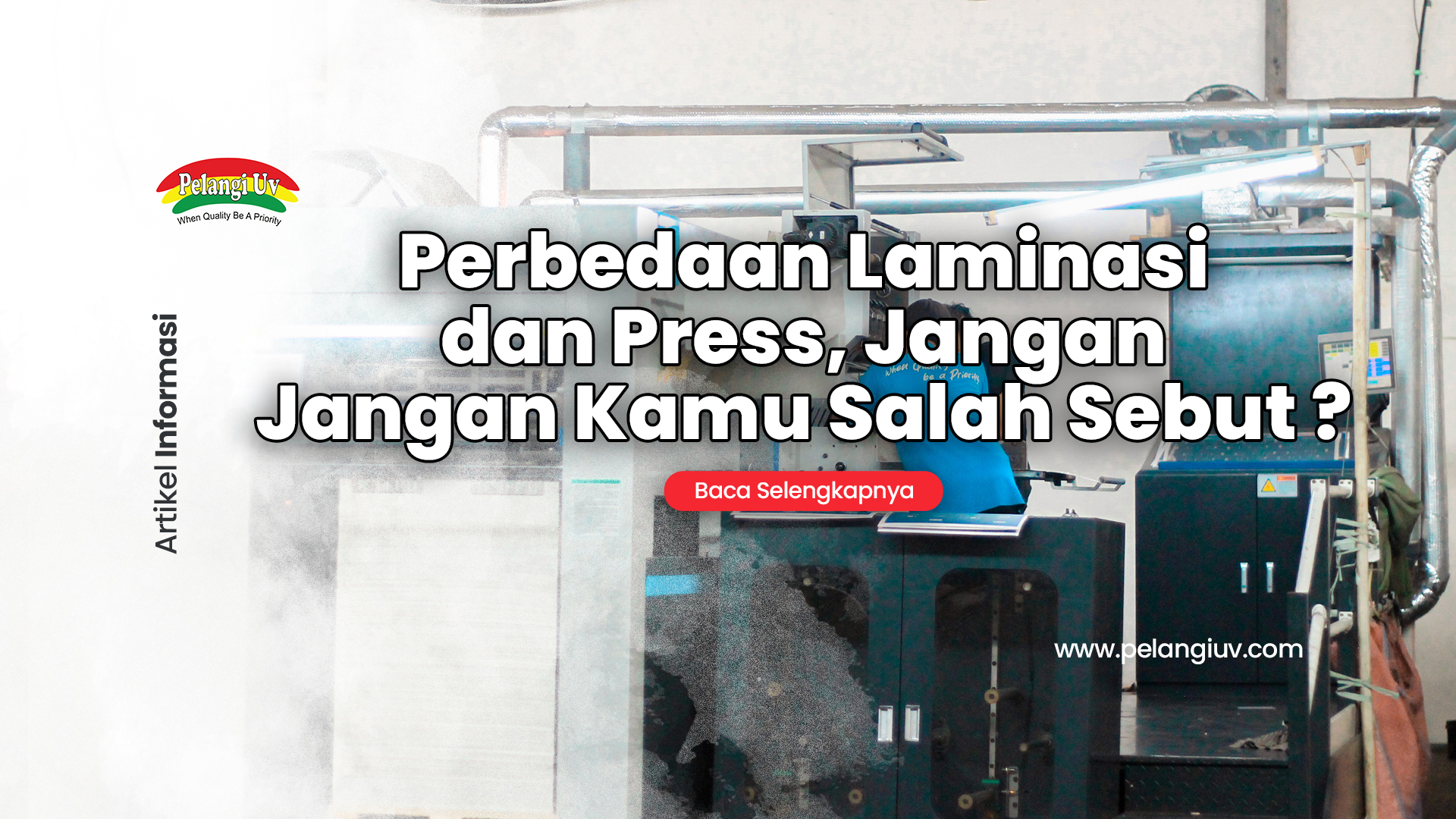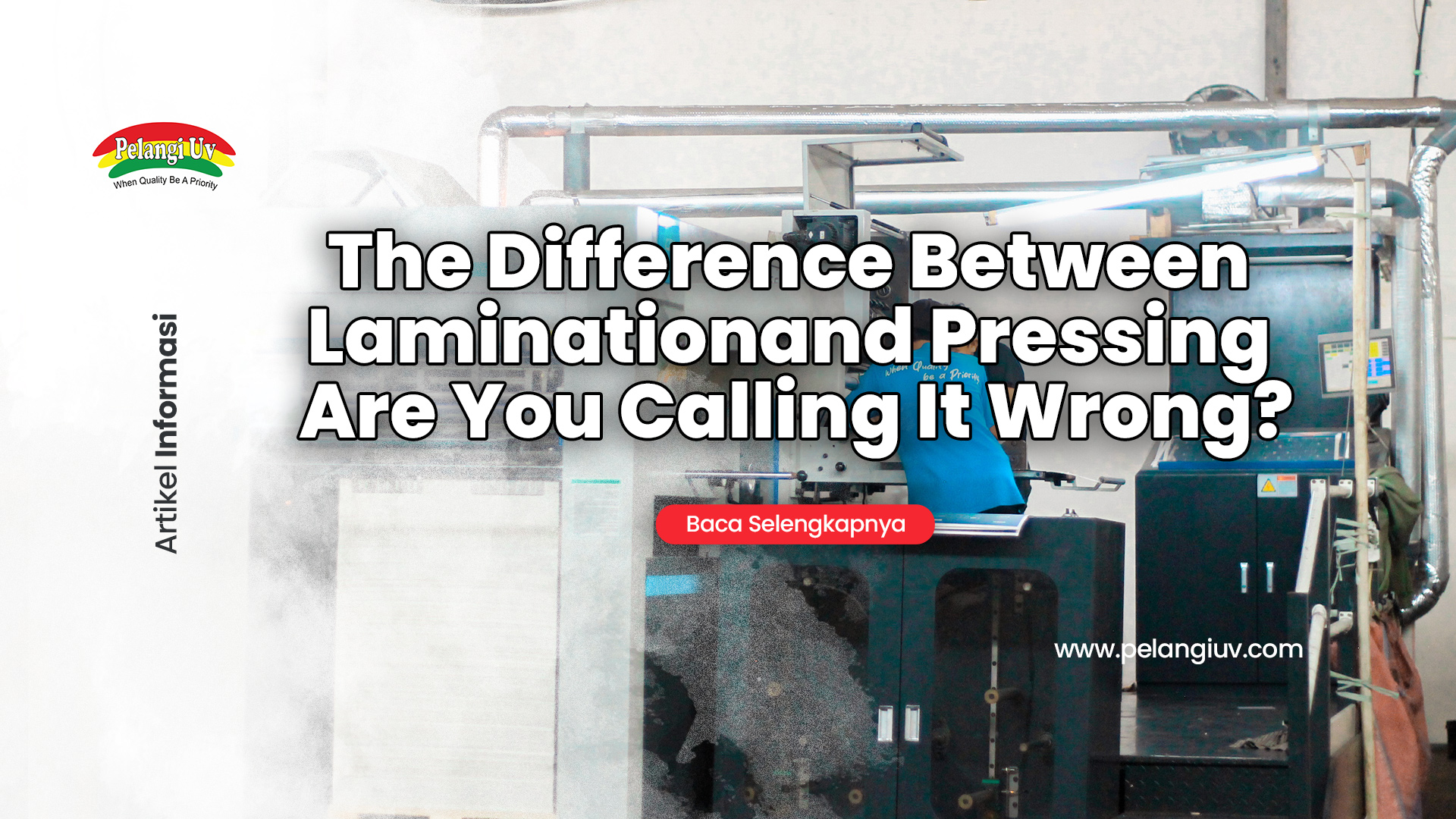The Difference Between Lamination and Press, Maybe You Call Them Wrong?
There are 8 differences between lamination and press that you need to know. Although, these two types have quite similar similarities, these two types of services are very different.
Lamination itself is the process of coating documents or printed paper using plastic, usually using thermal laminated plastic and water-based laminated plastic.
Meanwhile, press is the process of wrapping paper or documents using mica plastic, then using a sealer press.
So, what are the differences? Check out the explanation below!!
Differences between Lamination and Press
Here are the basic differences that you need to know about lamination and press.
Tools Needed
Press goes through several processes using a sealer or vacuum sealer machine. This tool can conduct heat through electric current and must be left for 10-15 minutes before use.
The way this machine works is by coating the paper with the mica plastic that will be used, then directing each end to the press machine one by one until it sticks perfectly.
So, that the middle part will not stick to the mica.
While for lamination using a tool that resembles a printer, so that the document and plastic stick parallel. Then inserted into the tool.
Differences in Materials Used
One of the main differences between pressing and laminating is the materials used. Document presses use mica plastic, also known as diploma mica, which is relatively affordable. This plastic is often used for book covers in binding methods. In contrast, laminating uses laminated plastic, either clear or opaque, with prices that tend to be more expensive.
Do You Need Adhesive?
Another difference lies in the use of adhesive. Document presses do not require adhesive because mica plastic can stick itself when melted due to heat. The melted plastic only makes the top and bottom mica layers stick together without affecting other parts of the document. This is different from laminated plastic which has been coated with adhesive glue. When exposed to the heat of the machine, the glue will melt and stick the plastic to the document without damaging its contents. Therefore, laminating is safe to use to coat documents such as business cards so that they are protected and remain readable.
How Laminating and Pressing Work
Laminating process:
Turn on the machine and set the temperature to 110°C, then wait about 5–10 minutes until it heats up.
Place the document in the laminating plastic and make sure it is positioned correctly.
Insert the document into the laminating machine, then wait for it to come out on the other side.
Pressing process:
Turn on the vacuum sealer machine, set the temperature to medium, and wait 10-15 minutes until it heats up.
Make sure the document is in the correct position in the mica plastic.
Clamp each side (top, bottom, right, and left) using the sealer machine for 3-5 minutes until the plastic adheres perfectly.
Cost
In terms of cost, document pressing is generally cheaper than laminating. Pressing services are usually charged starting from IDR 1,500.00 per sheet, while laminating can reach IDR 5,000.00 per sheet. Pressing services are easier to find at stationery stores or small photocopy shops, while laminating is usually available at large photocopy shops or certain printing services.
Durability
In terms of durability, both pressing and laminating have the same protection against dust, liquids, and stains, as long as the process is done correctly. However, the pressing technique is riskier because it requires manual adjustments to ensure the plastic layer adheres perfectly. If the tool is not hot enough or the plastic is not aligned, the document can be exposed to dust or water. Laminating is superior because the process is carried out automatically by a machine that ensures more precise results.
Risk of Document Damage
The pressing technique has a very small risk of document damage because only the edges of the plastic are attached. In contrast, laminating bonds the entire surface of the document with plastic, making it more suitable for protecting important documents such as certificates, diplomas, or deeds. Laminating provides more durable and long-lasting protection, even though the document is rarely reopened.
Clear, right? That's the difference between pressing and laminating techniques.

